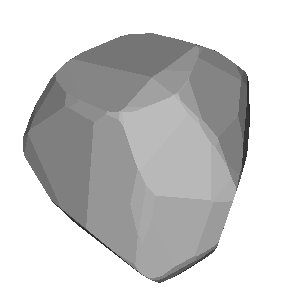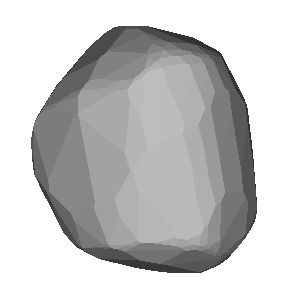2025-03-11 / UCAC4 378-074142 / (236) Honoria
| # | OBS | Observer | Occ | Meth. | Instr. | CC | TSRC | UT1 | UT2 | UT3 | UT4 | UT2E | UT3E | Dur. | Chrd |
|---|---|---|---|---|---|---|---|---|---|---|---|---|---|---|---|
| 1 | show | Dimitrios Athanasopoulos, Sophia Derlopa, Evangelos Gkiokas, +1 | O+ | CCD | T1200 | GR | NTP | 01:02:55 | 01:04:46.278 | 01:05:01.431 | 01:06:02 | 0.50 | 0.50 | 15.15 | 92.4 |
| 2 | show | Dimitrios Athanasopoulos, Sophia Derlopa, Evangelos Gkiokas, +1 | O+ | CCD | T1200 | GR | NTP | 01:02:56 | 01:04:47.386 | 01:05:01.247 | 01:06:01 | 1.15 | 1.15 | 13.86 | 84.5 |
2 observations found in db: sodis
Available (probably) matching predictions (click on the link to switch):| JPL#69 : 849a3260-855f-11ef-78cd-8c9fbf2fc0e2 [db: asteroids] |
Using prediction 849a3260-855f-11ef-78cd-8c9fbf2fc0e2 for map and profile fit
| Ellipse and circular profile fits to the timings (chords) |
|---|
|
|
Auto-Fit Result: Circular profile fit was not successful ... You can enter space separated chord numbers (example: 11 4 8) or a method like VIS to ignore all visual timings, or a time source like RAD and NTP (but not GPS). If the plot disappears, then there are less than 2 chords left (too much ignored, go back with browser). Check SiMDA for size and mass data. Check Johnston Archive for satellites. |
Sky projection (artificial light) for occ. time: 2025-03-11, 01:03 UT (JD = 2460745.544)
| DAMIT | Q | P (h) | λ, β | JD0 | JD-JD0 | φ0 | Version | Modified | Vol-equiv D | Cmnt |
|---|---|---|---|---|---|---|---|---|---|---|
| # 4890 | 1.0 | 12.340 | 14°, -5° | 2.45743e6 | 3315.5 | 0.0° | None | 2020-10-05 | not scaled | 2019-10-23 |
| # 4891 | 1.0 | 12.340 | 195°, 9° | 2.45743e6 | 3315.5 | 0.0° | None | 2020-10-05 | not scaled | 2019-10-23 |


Image size: 300px. Transparent image background for copy & paste
| Map with groundtrack and observer stations |
|---|
| Event Details |
|---|
Occultation UUID [and DB] : 849a3260-855f-11ef-78cd-8c9fbf2fc0e2 [asteroids] Occultation Date + Time : 2025-03-11 at 01:04:45 UT +/- 0.02 min [1] Object Designation : (236) Honoria Orbit Class : MBA Star Designation : GDR3 6263704957880131968 Star Coordinates (ICRF) : RA = 15 49 14.6844, DE = -14 34 03.285 [2] Star Magnitudes : G = 14.78 mag, RP = 14.11 mag, BP = 15.3 mag Object Magnitude : V = 13.95 mag Estimated Magnitude Drop : 0.4 mag Estimated Max. Duration : 14.2 sec Object Mean Diameter : 86.2 km (src: astorb) Speed of the shadow : 6.1 km/s Elongation to Moon & Sun : 104° (sunlit = 90%), Sun = 112° Cross-track uncertainty : 0.7 mas = 1 km = 0.02 path-width (1-sig) RUWE and duplicate source : 0.98 mas, dup.src = 0 (0:false, 1:true) Ephemeris Reference : JPL#69 [1] time t0 of closest geocentric approach c/a, [2] including proper motion until t0 |
| More Data and Informations |
|---|
(If error 404: link not valid which means no data available)
| Aladin Sky Atlas |
|---|
| Aladin Lite direct link (has Gaia overlay) |












